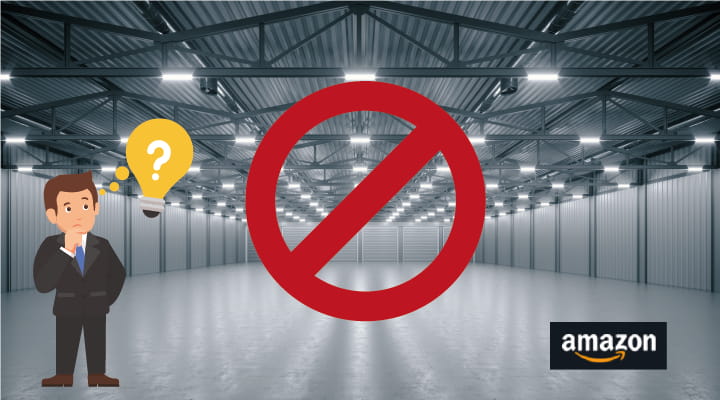
How to Sell on Amazon Without Inventory
- Dropshipping
- This model allows you to offer products on Amazon without holding any stock. You purchase the item from a supplier only after a customer orders, and the supplier ships it directly to them.
- Pros: Minimal initial expenses and no inventory management required.
- Cons: Smaller profit margins and the necessity to adhere to Amazon’s specific policies for dropshipping.
- Amazon FBA (Fulfillment by Amazon)
- You stock your products at Amazon’s warehouses. Amazon is responsible for shipping and managing returns and customer inquiries upon a sale.
- Pros: Opens the door to Amazon Prime customers and offloads fulfillment and customer care tasks to Amazon.
- Cons: Demands an initial investment for stock and incurs FBA service charges.
- Selling Digital Products
- Market digital products such as eBooks, audiobooks, and online courses via Amazon Kindle Direct Publishing or Amazon Media on Demand for music and video content.
- Pros: Offers the chance for passive income without the need for physical inventory.
- Cons: The challenge lies in producing and marketing compelling digital content that captures attention.
- Print on Demand (POD)
- Design and sell customized products like t-shirts, books, and mugs. A third party prints and ships the product upon purchase.
- Pros: No initial inventory costs and unlimited potential for creativity.
- Cons: Faces stiff competition and requires proficiency in design.
Using Amazon’s system and tools, you can create a successful online Amazon market business without managing physical inventory. This method involves sourcing products from suppliers, utilizing FBA fulfillment centers or dropshipping, and using various tactics to increase sales on Amazon.
The way to sell is to focus on building a strong brand and catering to customer needs while Amazon manages the logistics on your behalf.
Using platforms like Fulfillment by Amazon™ (FBA) makes selling on Amazon without inventory easy. With FBA, you ship your products to Amazon’s warehouses, and they handle order fulfillment and customer service.
Alternative models, such as dropshipping, allow you to sell products without physically handling them. To succeed in selling on Amazon without inventory, read this Guide on Selling on Amazon FBA in 2023.
Advantages of Selling on Amazon Without Inventory
Selling on Amazon without inventory offers numerous benefits for entrepreneurs, starting with lower costs. Since you don’t need to invest in purchasing or storing products upfront, your initial expenses stay low, allowing you to channel funds into other business areas. This approach also means you don’t have to worry about unloading unsold items, minimizing risk.
Flexibility: You can quickly test new products and adjust your offerings to market trends. This dynamic approach gives you a competitive edge, as you can adapt to changing customer preferences more efficiently than sellers with a traditional Amazon inventory model.
The absence of inventory management responsibilities creates opportunities for higher profit margins. Traditional fulfillment models claim about 41.54% of your revenue, which can decrease when you sell without inventory. Additionally, you avoid expenses like storage fees and warehouse overhead, making it possible to generate a substantial income.
Scalability is an attractive aspect for entrepreneurs. Way to sell without inventory enables you to grow your Amazon business more efficiently, as you don’t need to invest in additional warehouses to accommodate increased stock. Thanks to the support of third-party suppliers, you can expand at a pace that suits you.

Choosing the Right Business Model
When selling on Amazon without inventory, the key lies in selecting the most appropriate business model for your needs. This section will explore four major approaches: Dropshipping, FBA, Digital Products, and Print-On-Demand.
1. Dropshipping Method
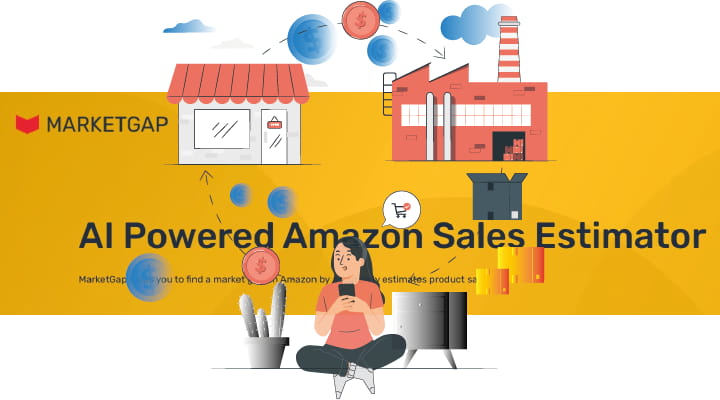
Working with Reliable Suppliers
Regarding the dropshipping model, partnering with reliable suppliers is crucial for your success in selling on Amazon without inventory. This method eliminates the need to handle inventory, allowing you to focus on marketing and customer service. By working with trustworthy suppliers with a history of timely deliveries and quality products, you can ensure customer satisfaction and maintain a positive reputation.
Take the time to research potential suppliers, read reviews, and verify their credentials before committing. Establish clear communication channels and processes for handling consumer orders and returns, ensuring smooth transactions from beginning to end.
Handling Customer Orders
In the dropshipping process, you’ll list your suppliers’ products on Amazon, and they will handle the shipping once a customer places an order. It’s essential to have an efficient system in place to manage these orders seamlessly.
Firstly, establish a procedure for promptly forwarding customer orders to your supplier. Depending on the volume of orders you receive, this can be done through integrated software that automatically sends orders or by manual processes.
Secondly, monitor order fulfillment to ensure your supplier ships the products on time. Be proactive in communicating with your customers regarding shipping updates and any potential delays. Address any issues during this stage to maintain customer satisfaction and minimize negative feedback.
Finally, handle returns and refunds efficiently. Work closely with your supplier to understand their policies in these situations, and develop a process that corresponds with Amazon’s return guidelines to avoid penalizing your seller ranking.
By adopting the dropshipping method, you can leverage several benefits:
- No need to manage physical inventory
- Low overhead and startup costs
- Easier scaling when your business grows
However, bear in mind the potential challenges associated with dropshipping on Amazon:
- The responsibility to find reliable suppliers
- Dependence on suppliers for product quality and shipping
- Lower profit margins compared to traditional retail models
Ultimately, the dropshipping model presents an opportunity to sell on Amazon without the burden of inventory management. Proper planning, thorough supplier research, and a system for efficiently handling consumer orders can make this approach work for your online enterprise.
Dropshipping is a business model in which you don’t hold any inventory. Instead, you partner with a wholesale supplier who stocks your products. When a customer makes a purchase, you forward the order to the supplier, who then ships the item directly to the customer. This method reduces the financial risk and storage requirements associated with traditional e-commerce fulfillment.
The dropshipping model is popular among entrepreneurs because it allows them to start selling on Amazon with minimal upfront investment. However, this approach also has challenges, such as limited control over product quality and shipping times. To succeed with dropshipping, finding reliable suppliers and providing excellent customer service is crucial.
2. Fulfillment By Amazon (FBA)

Fulfillment by Amazon (FBA) is essential for sellers who aim to sell on Amazon without directly handling inventory. It allows sellers to store products in Amazon fulfillment centers, facilitating selling on Amazon without inventory. This service manages storage and shipping, simplifying the selling process on Amazon and offering access to Amazon Prime, which is key for sellers interested in selling on Amazon without managing logistics.
With FBA, sellers can concentrate on market and sales, as Amazon handles inventory storage, order fulfillment, and returns. This is especially beneficial for those looking for ways to sell on Amazon without inventory, leveraging Amazon’s efficient shipping. FBA’s streamlined logistics and varied shipping options are ideal for those selling on Amazon without the hassle of inventory management. However, one must be mindful of potential higher fees for long-term storage.
What is Fulfillment By Merchant (FBM)?
FBM method is unsuitable for sellers who want to sell on Amazon without inventory.
Fulfillment by Merchant (FBM) is a strategy for sellers to manage inventory on Amazon, where they oversee storage and shipping. This method enables sellers to ship products directly to customers, either from their own facilities or through third-party logistics.
FBM offers sellers control over shipping, pricing, and handling, allowing them to tailor these aspects to their business needs. While FBM doesn’t include Amazon Prime eligibility, potentially impacting customer attraction, it provides flexibility in managing shipping services and costs. Sellers must ensure high-quality shipping standards to secure positive customer reviews and maintain their market presence on Amazon.
Understanding how to sell on Amazon without inventory can open up new seller opportunities.
3. Digital Products and Other No-Inventory Options
Digital products, such as e-books, software, and online courses, offer yet another way to sell on Amazon without requiring physical inventory. In this model, customers purchase and receive electronic files instead of physical items. Since there is no need to store inventory or manage shipping, this approach is a cost-effective option for entrepreneurs starting in e-commerce.
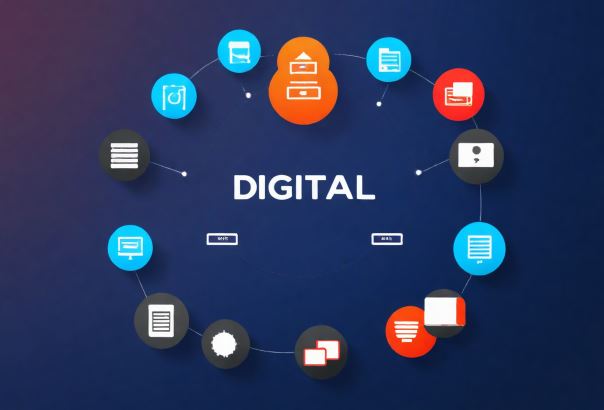
With digital products, creating valuable and engaging content that attracts and retains customers is essential. Whether offering software solutions or educational material, focus on producing high-quality information that meets your audience’s needs and expectations.
In conclusion, selling on Amazon without inventory is possible through various business models, including dropshipping, print-on-demand, and digital products. Choose the one that best aligns with your goals, competencies, and resources to maximize your chances of success in e-commerce.
Digital Product Overview
If you’re interested in selling on Amazon without inventory, digital products are a great option. These can include e-books, digital music, and other digital items that don’t require storage. Such products can be created once and sold repeatedly without restocking or keeping physical inventory.
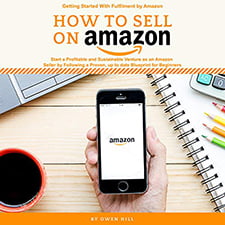
E-books, for instance, can be a cost-effective and speedy entry into the world of Amazon selling. As an author, you can self-publish your e-books and directly upload them onto Amazon’s Kindle Direct Publishing (KDP) platform. With KDP, you can earn up to 70% royalties on each sale, depending on the chosen price point and geographical location.
Another option is selling digital music through Amazon’s Digital Music service. Independent musicians can upload their tracks and reach a global audience. Like e-books, selling digital music lets you pocket a generous share of royalties from each sale.
For those with a creative flair, the Amazon Handmade online marketplace is an excellent opportunity to sell handmade and unique products. Although these are physical products, this platform allows artisans to create and sell products on demand, which can help reduce inventory concerns.
For digital products selling without inventory effectively, consider the following tips:

- Focus on high-quality, original content to stand out from competitors
- Optimize your product listings with relevant keywords and well-written descriptions
- Price your products competitively, considering the time and effort put into creating them
You can build a successful Amazon business with minimal overhead and reduced logistical concerns by delving into digital products and other no-inventory options. Embrace your creativity and expertise to easily generate income in the vast Amazon marketplace. Learning how to sell on Amazon without inventory is part of this approach.
4. Print-On-Demand
Another exciting option for selling on Amazon without inventory is Print-On-Demand (POD). In this model, you create and sell custom-concept products, such as t-shirts, mugs, and phone cases. When a customer orders one of your designs, the POD service prints the item and ships it directly to the customer.

POD offers similar benefits to dropshipping, with the added advantage of providing unique, personalized products, which can lead to increased consumer satisfaction. To make the most of this model, invest time and effort into creating high-quality, eye-catching designs that resonate with your target audience.
How to Sell on Amazon Without Inventory First Steps
Selling on Amazon without inventory is gaining popularity among entrepreneurs. This approach offers several benefits, including reduced startup costs, flexibility in managing product lines and leveraging Amazon’s extensive customer base and visibility.
One effective strategy to sell on Amazon without inventory is dropshipping. Dropshipping involves partnering with a supplier who ships products directly to customers on your behalf. This eliminates the need to store and manage inventory, allowing you to focus on marketing and growing your online business. However, it’s important to know the challenges associated with dropshipping, such as shipping costs and supplier reliability.

Another option is utilizing Fulfillment by Amazon (FBA), a service where Amazon takes care of storage, packaging, and shipment of your products. By sending products directly to Amazon’s warehouses, you can avoid maintaining inventory. To succeed with FBA, following Amazon’s product labeling, packaging, and requirements guidelines is crucial to ensure smooth operations.
Retail arbitrage is another strategy to consider. This involves purchasing products at a lower price from other retailers and reselling them on Amazon for a profit. While this method doesn’t require managing inventory, staying updated on price fluctuations and product trends is essential to maintain profits.
- Dropshipping as a Strategy: Dropshipping is an effective way to sell on Amazon without inventory, where suppliers ship products directly to customers, focusing on the challenges of shipping costs and supplier reliability.
- Utilizing Fulfillment by Amazon (FBA): Discusses using FBA as a method to sell on Amazon without inventory, where Amazon handles storage, packaging, and shipping, emphasizing the importance of adhering to Amazon’s guidelines.
- Retail Arbitrage for Amazon Selling: Covers retail arbitrage as a strategy to sell on Amazon without inventory, involving buying products at lower prices and reselling them on Amazon for profit, highlighting the need to stay informed about market trends.
Lastly, offering digital products is an effective way to sell on Amazon without inventory. Digital products can include eBooks, courses, and software solutions, which can be delivered instantly to customers without needing physical storage or shipping. This option provides a scalable solution for entrepreneurs who want to create valuable content for selling without inventory-related concerns.
In conclusion, starting your Amazon business and selling without inventory is viable for entrepreneurs seeking to leverage the platform’s massive customer base and powerful features. You can build a profitable online business with reduced costs and enhanced flexibility by considering strategies like dropshipping, FBA, retail arbitrage, or selling digital products. Now you understand how to sell on Amazon without inventory.
- Selling Digital Products on Amazon: Explains how selling digital products like eBooks and software is an effective way to sell on Amazon without inventory, offering instant delivery to customers without physical storage or shipping concerns.
- Advantages of Selling Without Inventory on Amazon: This section emphasizes the advantages of selling on Amazon without inventory, such as leveraging Amazon’s customer base and visibility while avoiding the complexities of inventory management.
- Challenges in Dropshipping on Amazon: There are specific challenges in dropshipping, such as managing shipping costs and ensuring supplier reliability, as part of the strategy to sell on Amazon without inventory.
- Success with FBA and Compliance: This section highlights the importance of complying with Amazon’s product labeling and packaging requirements for selling successfully on Amazon using FBA without needing personal inventory management.
- Retail Arbitrage and Market Awareness: Stresses the importance of market awareness and understanding price fluctuations in retail arbitrage to sell on Amazon without holding inventory.
- Scalability of Digital Products in Amazon Marketplace: Notes the scalability and potential of digital products as a way to sell on Amazon without inventory, catering to a market that demands instant, accessible content.
Choosing the Right Products

Identifying Popular and Profitable Niches
To succeed in selling on Amazon without inventory, you must first research and identify popular and profitable niches. Analyzing Amazon trends can reveal high-demand products with the potential for lucrative income. Additionally, using market research tools like Google Trends and niche-specific forums can help you discover profitable niches where you can stand out.
When considering how to sell on Amazon without inventory, it’s crucial to focus on pricing strategies. Products with higher price tags can lead to greater revenue per transaction. Although there might be more competition for sought-after items, carving out a niche with a distinct USP (Unique Selling Point) can differentiate your offerings. This approach enhances your visibility in the Amazon market and maximizes your potential profits, especially when selling on Amazon without holding any inventory.
Testing Product Demand
Before fully committing to a particular niche, test the demand for your chosen products. Use Amazon’s search bar to gauge popularity by reviewing the search volume and existing competition. Evaluate best-selling items in your niche and note any patterns, such as their reviews or sales rankings. This provides valuable insights into potential sources of income.
Consider running a small-scale ad campaign or listing a limited number of test products to measure a product’s viability in the online marketplace. Assess how easily you can source the items, their price points, and the potential profit margins they may yield. Monitor seasonal fluctuations in demand and determine whether a product’s popularity is sustainable long-term.
Conduct thorough market research and test product demand to effectively choose the right products to sell on Amazon without inventory. By targeting popular and profitable niches and ensuring sufficient demand exists, you’ll increase your chances of generating a sustainable income from your Amazon sales.
Choosing the right product is not enough. You must Choose the Right Business to know how to efficiently sell on Amazon without inventory.
Creating a Competitive Product Listing if you don’t know How to Sell on Amazon Without Inventory
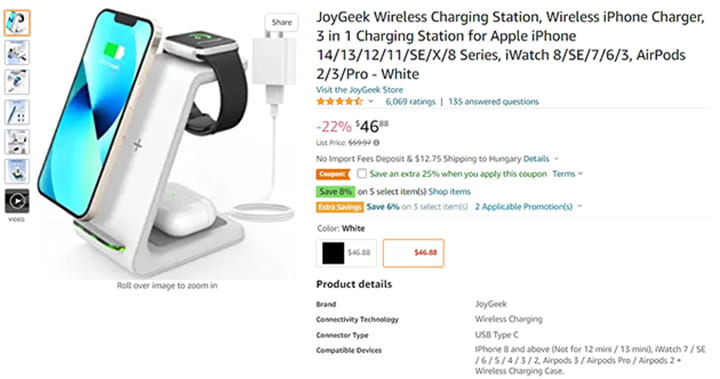
Product Selection
Selecting a product with high demand and low competition is crucial to creating a competitive product listing on Amazon without inventory. Conduct thorough keyword research to identify profitable niches and potential product ideas. Look for products with stable or growing search volume and limited competition from other sellers. Focus on appealing to a target audience by selecting a unique product or offering a better version of an existing item.
Images

High-quality product images play a significant role in driving customer engagement and sales on Amazon. Invest in professional-grade photographs showcasing the product from various angles, highlighting its features and benefits. Use clear, well-lit images on a white background, following Amazon’s guidelines for image resolution and aspect ratio. Including close-up shots to show product details and lifestyle images demonstrating the product in use can help create a convincing visual story that connects with potential buyers.
Descriptions
A compelling product description is essential for standing out against competitors and converting potential buyers into customers. Focus on highlighting the product’s unique selling points, benefits, and value proposition. Incorporate relevant keywords gathered during your initial keyword research to increase visibility in search results and appeal to your target audience.
Breaking down the description into bullet points makes it easier for potential buyers to quickly scan and understand the product’s key features. Use concise, clear language while addressing customers’ questions or concerns. Including real-life examples can further enhance the description’s credibility and relatability.
In summary, competitively listing a product on Amazon without inventory requires careful product selection, attention to high-quality images, and crafting captivating descriptions. By prioritizing these crucial elements, sellers can maximize visibility, attract customer interest, and improve their chances of success on the platform. Understanding how to sell on Amazon without inventory is a key aspect of this strategy.
Selling on Amazon Requires a Proper Pricing and Profit Strategy
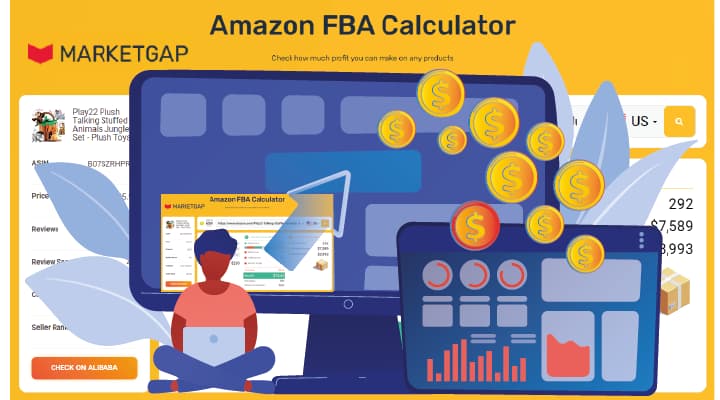
Pricing to Stay Competitive
To succeed in selling on Amazon without inventory, it’s essential to have competitive pricing for your products. Research the market to understand the going rate for similar products or services. Take note of your competitors’ prices and adjust yours accordingly. So you will know how to sell on Amazon, and remember that the price you set directly impacts how much money you make on each sale, as Amazon takes a commission based on a percentage of the listed price.
As market trends constantly shift, it’s vital to stay alert and be ready to adjust your prices. Regularly evaluate your pricing strategy to ensure it keeps you in the game. A successful pricing strategy can also be an excellent way to sell without inventory, and you can still balance staying competitive and ensuring profitability.
Setting the Prices
Developing an effective pricing strategy involves finding a balance between profitability and competitiveness. Consider these factors when setting prices:
- Market research: Analyze competitor prices, promotional strategies, and customer reviews. This can help identify patterns and effective pricing within the target market.
- Dynamic pricing: Use automated repricing tools to adjust prices in real-time, staying competitive and maximizing profits.
- Price anchoring: Introduce different product variations at various price points, creating a perception of value. This tactic can influence customers to compare options and choose the most suitable one.
Consistently monitoring market trends and adjusting prices can help maintain a competitive edge while maximizing income. However, avoid underpricing or overpricing, as it can decrease potential profits or deter customers.
- Competitive Pricing for Selling on Amazon Without Inventory: Emphasizes the need for competitive pricing to succeed in the Amazon market without holding inventory.
- Market Research for Pricing: Highlights the importance of researching competitor prices and market trends to set competitive prices for selling on Amazon.
- Dynamic Pricing Strategies: Suggests using tools like RepricerExpress or SellerEngine for real-time price adjustments, which is crucial for staying competitive and maximizing profits on Amazon.
- Price Anchoring Techniques: Discusses using different product variations at various price points to create value perception, aiding in selling on Amazon without inventory.
Maximizing Profits
To maximize earnings, begin by calculating your profit margin when looking to sell on Amazon without inventory. This margin is the difference between the selling price of your product and all associated costs, such as sourcing, listing on Amazon, and shipping. Mastering the art of selling on Amazon and enhancing your profit margin is crucial for developing an effective pricing strategy. This knowledge is vital for determining the lowest price at which you can sell your products while covering all expenses and ensuring a satisfactory profit, which is particularly important when selling on Amazon without holding any inventory.
Consider incorporating some of the following tactics to maximize profits:
- Bulk Discounts: Offer discounts to customers who purchase a higher quantity to increase their average order value.
- Upselling or Cross-Selling: Recommend complementary or higher-priced products to customers who have demonstrated interest in your offerings.
- Seasonal or Limited-Time Sales: Encourage purchases with time-sensitive discounts or during specific seasons when your product may be more in demand.
Regularly evaluating your pricing and profits will ensure that your strategy remains effective under changing market conditions and help you maintain a higher profit margin. You can successfully sell on Amazon without inventory by staying competitive and optimizing your profits.
Analyzing Profit Margins
A crucial aspect of selling on Amazon without inventory is ensuring potential sales yield a substantial profit. To effectively analyze profit margins, consider the following:
- Calculate the cost of goods sold (COGS): This figure includes production expenses, third-party fees, and shipping costs.
- Determine gross profit: Subtract COGS from the selling price.
- Calculate profit margin: Divide the gross profit by the selling price and multiply by 100 to obtain the percentage.
For example, if a product costs $10 (total COGS) and sells for $30, the gross profit is $20 ($30 – $10), and the profit margin result is 66.7% ($20 ÷ $30 × 100).
For more precise calculations, use tools like FBA Calculator.
FBA Revenue Calculator
Free tools like Amazon FBA Revenue Calculator and Sales Estimator can provide valuable insights into profit margins for various products and niches.
- Maximizing Profits on Amazon Sales: Advises on calculating profit margins and incorporating tactics like bulk discounts, upselling, and seasonal sales to increase profits while selling on Amazon.
- Effective Pricing to Stay Competitive and Profitable: Stresses the balance between competitive pricing and profitability for those looking to sell on Amazon without inventory.
- Analyzing Profit Margins for Amazon Sales: This covers the importance of calculating COGS, gross profit, and profit margin to ensure substantial profits when selling on Amazon without inventory.
Managing Your Online Store

Maintaining Quality Customer Service
One key aspect of running a successful Amazon business selling without inventory is providing outstanding customer service. Since you’re not handling the products directly, it’s crucial to be attentive to your customers’ needs and concerns. Respond to inquiries promptly and offer assistance when needed, as this helps build trust and maintain positive reviews.
Some tactics for improving customer service include:
- Providing accurate and detailed product descriptions
- Offering speedy refunds or replacements when justified
- Monitoring and tracking consignment statuses to ensure timely deliveries
Inventory Management Without Inventory

Selling on Amazon without inventory involves methods like dropshipping and retail arbitrage. These strategies enable you to focus on managing your online store and keep a way to sell without the burden of handling physical products.
Amazon Dropshipping: In this model, you list products from a supplier, and when a customer purchases an item, the supplier ships the product directly to the customer. This eliminates the need for inventory management and storage space, as the supplier is responsible for fulfilling the orders. Maintain regular communication with suppliers to ensure product availability and manage potential stock issues.
Retail Arbitrage: With retail arbitrage, you purchase items at lower prices from brick-and-mortar stores or other online marketplaces, then sell them on Amazon at a higher price. Although you don’t hold an extensive inventory, monitoring prices and staying informed about market trends is still important to know how to sell on Amazon.
When navigating these strategies, remember:
- Choose reliable suppliers and establish clear communication channels
- Regularly review your product listings to ensure accurate information
- Stay informed about trends and prices to optimize sales
Selecting Reliable Suppliers
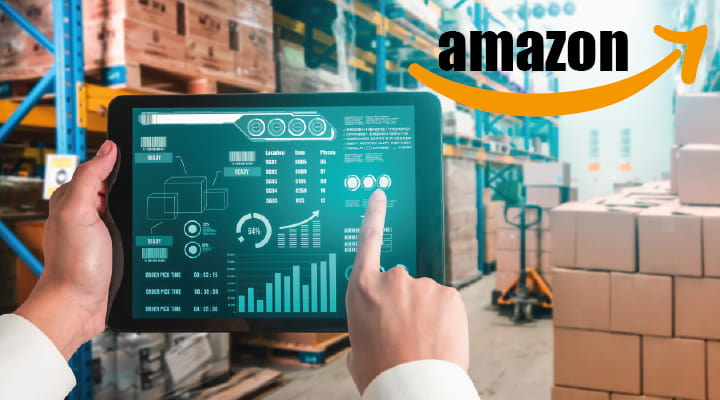
When embarking on a journey to sell on Amazon without inventory, it is crucial to partner with reliable suppliers who can efficiently handle order fulfillment and logistics. Choosing the right supplier ensures seamless collaboration and can significantly contribute to the growth of your business.
To find trustworthy suppliers, there are several factors to consider:
- Reputation: Research suppliers’ history, track record, and customer reviews. This will give you insights into their performance and reliability, saving you from pitfalls.
- Manufacturing capabilities: Evaluate a potential partner’s manufacturing capacity, technology, and quality control processes to assess whether they can meet your product requirements.
- Warehouse storage: Since you lack inventory, it’s crucial to collaborate with suppliers who have adequate warehouse storage facilities. This guarantees smooth operations, even during peak demand periods.
- Logistics capacity: Dependable suppliers should have established relationships with freight forwarders and carriers. Efficient supply chain management is crucial in reducing shipping costs and delivering products on time.
- Pricing and payment terms: Evaluate suppliers based on their pricing, discount structures, and payment terms. Transparency in these areas contributes to a healthy, long-term partnership.
To identify potential reliable suppliers, consider these approaches:
- Dropshipping directories: Browse comprehensive directories dedicated to dropshipping suppliers, where you can filter by product category, location, and other critical factors.
- Trade shows and networking events: Leverage trade shows, industry conferences, and networking events to connect with suppliers and manufacturers face-to-face.
- Wholesale supplier platforms: Utilize online wholesale marketplaces to streamline your search. These platforms connect retailers with many suppliers and offer detailed supplier information.
Building a successful, inventory-free Amazon business entails forging strong, long-lasting partnerships with experienced, dependable suppliers. With a careful and thorough evaluation process, you’ll be well on your way to achieving success in eCommerce for selling without the burden of inventory management. Exploring the way to sell on Amazon without inventory is an essential step in this journey.
Effective Marketing Strategies for Inventory Free Selling

Marketing plays a crucial role in successfully selling products on Amazon without inventory. Many affiliate marketing strategies can help boost your presence as an Amazon seller and propel your business to success.
One vital aspect is leveraging Amazon advertising; Amazon offers a platform where sellers can create impactful ads to reach potential customers. Use Sponsored Products and Sponsored Brands to gain visibility and attract more buyers to your listings. You can monitor the performance of your ads and fine-tune them to optimize return on ad spend (ROAS).
Social media advertising is another powerful tool for marketing your products. Facebook, in particular, offers excellent targeting options to reach specific audiences interested in your niche. Running Facebook ads helps create brand awareness and drives traffic to your Amazon listings. Furthermore, engaging with your audience through relevant and high-quality content enhances your credibility and fosters customer loyalty.
Influencer marketing effectively promotes products by partnering with influencers in your niche with a large and dedicated following. These influencers can create engaging content featuring your products and share it on their platforms, naturally driving more sales. This approach bolsters trust among potential customers and heightens your access to a new customer base.
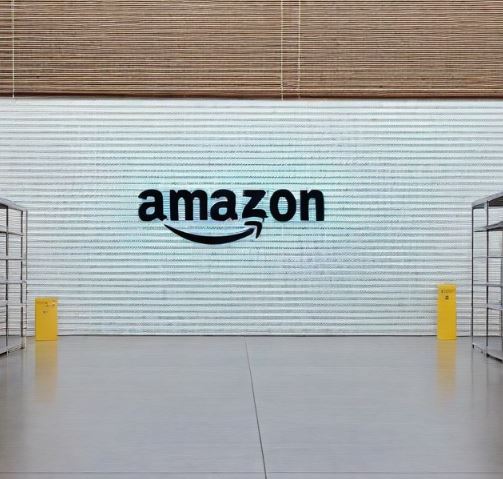
Lastly, optimizing your Amazon product listings by incorporating relevant keywords will maximize your chances of appearing higher in search results, driving more organic traffic to your listings. Researching the most searched keywords in your market segment is vital for this effort. Moreover, ensure your product images, descriptions, and reviews are top-notch to convert browsers into buyers.
Understanding how to sell on Amazon without inventory can further enhance your strategy in this competitive marketplace.
Combining these effective affiliate marketing strategies can enhance your Amazon selling without investing in inventory.
Maintaining Quality Customer Service

Providing exceptional customer service is crucial for any Amazon seller, as it significantly impacts customer satisfaction and repeat business. Handling customer orders efficiently and promptly is one way to ensure a positive shopping experience for your clientele.
One aspect of maintaining excellent customer service is proactively managing customer inquiries and concerns. As an inventory-less seller, you might not directly handle the products, but you’re responsible for ensuring customers receive their orders on time and in good condition. Regularly communicating with suppliers can help you stay informed about potential issues or delays.
Returns management is another vital component of customer service. Even though you don’t hold inventory, you must have a solid returns policy and process. Collaborate with your suppliers to create a seamless return experience for customers by clarifying the responsibilities of each party. This ensures timely refunds or replacements, keeping buyers satisfied and more likely to revisit your Amazon store.
Efficient communication is essential in providing exceptional customer service. Responding to customer messages, addressing their concerns, and providing updates on their orders reflect your commitment to customer satisfaction. To communicate effectively with your customers, utilize Amazon’s messaging system and adhere to its guidelines.
By prioritizing customer service, Amazon sellers without inventory can create a successful and sustainable business model. Remember, customer satisfaction lies at the heart of repeat purchases and positive reviews, contributing to your overall success on Amazon’s platform. Learning how to sell on Amazon without inventory is important for new sellers.
Overcoming Challenges and Risks Data Research

Selling on Amazon without inventory challenges
Selling on Amazon without inventory presents several challenges businesses must overcome to succeed. These challenges include competition, market research, managing inventory, financial risk, analytics, and adhering to Amazon’s rules. The right strategies and tools can help businesses navigate these challenges and excel on the platform.
Competition on Amazon is fierce, as thousands of sellers offer similar products. Staying ahead of competitors requires extensive market research and continuous improvement to product listings, prices, and marketing efforts. Identifying gaps in the market and focusing on niche products can help reduce direct competition.
Market research is crucial in finding profitable products to sell, understanding customer needs, and tracking competitor strategies. This research can be done using various analytics tools and software that provide insights into market trends, product performance, and customer behavior.
Businesses must embrace inventory management software, even if they don’t hold inventory. This software maintains real-time updates on stock levels and order progress, helping sellers avoid stock-outs, delays, and cancellations. Accurate inventory management is critical for maintaining customer satisfaction and positive reviews.
Financial risk is ever-present in e-commerce, and Amazon is no exception. Sellers must carefully manage their cash flow, considering affiliate marketing, platform fees, and product sourcing costs. Budgeting and forecasting tools can help businesses keep track of their finances and make data-driven decisions to mitigate risk.
Analytics are indispensable for optimizing Amazon sales. Several tools on the market help sellers track their key performance indicators (KPIs), including conversion rates, customer reviews, and advertising efficiency. By analyzing this data, sellers can identify strengths and weaknesses and adjust their strategies.
Finally, understanding Amazon’s rules and regulations is critical for compliance and avoiding penalties. By carefully reviewing Amazon’s guidelines and policies, sellers can ensure their operations align with platform requirements, thus avoiding account suspension or unforeseen fees.
In conclusion, businesses must overcome various challenges and risks to succeed on Amazon without holding inventory. By implementing effective strategies and employing the right tools, sellers can thrive in this competitive e-commerce landscape. Understanding how to sell on Amazon without inventory is crucial for those interested in exploring this avenue.
Leveraging Dropshipping for Cost-Effective Ecommerce
Dropshipping as a Low-Cost Entry
Dropshipping is a highly cost-effective model for new entrepreneurs looking to enter the ecommerce space and sell Amazon products. This approach significantly reduces the upfront investment typically required for inventory, as products are purchased only after a sale. This model allows for a more accessible entry point into the online marketplace, making it an attractive option for those with limited capital.
Risk Management in Dropshipping
While dropshipping minimizes initial costs, sellers must understand and manage the associated risks. These risks include supplier reliability dependency and potential product quality control issues. Effective communication with suppliers and a clear understanding of their fulfillment processes are key to mitigating these risks and ensuring customer satisfaction.
Performance Metrics for Dropshipping Success
Monitoring performance metrics is vital in a dropshipping business model. Key metrics include order fulfillment times, customer feedback, and return rates. Tracking these metrics helps sellers identify areas for improvement, maintain high customer service standards, and ultimately drive business growth on platforms like Amazon.
Enhancing Ecommerce with Third-Party Logistics (3PL)
The Role of 3PL in Ecommerce Scalability
Third-party logistics providers are instrumental in scaling ecommerce businesses. They offer storage, inventory management, and order fulfillment solutions, allowing sellers to focus on other aspects of their business, like marketing and product development. This partnership can be particularly beneficial for Amazon sellers looking to expand their operations without the burden of managing a physical warehouse.
Cost Benefits of Using 3PL Services
Utilizing 3PL services can lead to significant cost savings for ecommerce businesses. These providers often have economies of scale, which can reduce shipping and storage costs. For Amazon sellers, this means offering their customers competitive pricing and shipping options without compromising profit margins.
Ensuring Customer Satisfaction with 3PL
A major advantage of using 3PL services is the potential improvement in customer satisfaction. Reliable 3PL providers can ensure faster shipping times and more efficient handling of orders, which are critical factors in maintaining a positive reputation on Amazon and encouraging repeat business.
The Impact of Print-on-Demand in Online Marketplaces
Print-on-Demand: A Flexible Ecommerce Model
Print-on-demand is revolutionizing how digital art and custom products are sold in online marketplaces like Amazon. This model allows for the creation of products only after they have been ordered, significantly reducing the need for inventory and minimizing the risk of unsold stock. It’s an ideal model for artists and creators who want to sell their designs without the hassle of managing physical products.

Cost-Effectiveness of Print-on-Demand
One of the most significant advantages of print-on-demand is its cost-effectiveness. Since products are created post-order, there’s no need for a large upfront investment in inventory. This makes it an accessible option for individuals and small businesses exploring ecommerce opportunities on platforms like Amazon.

Customization and Consumer Appeal
Print-on-demand services offer high customization, which is increasingly appealing to today’s consumers. This business model allows for a wide range of products, from custom t-shirts to personalized ebooks, catering to the diverse preferences of Amazon’s vast customer base. This level of customization can help sellers stand out in the competitive online marketplace.
How to Sell on Amazon Without Inventory FAQ

How does dropshipping on Amazon help in avoiding stockouts?
Dropshipping is the Way to Sell
Dropshipping is a key strategy for selling on Amazon without inventory, enabling sellers to prevent stockouts. In this model, products are shipped directly from a third-party supplier to the customer upon order, aligning with the concept of selling on Amazon without holding inventory and ensuring availability as long as the supplier stocks the items.
What are the scalability advantages of using third-party logistics (3PL) for Amazon sales?
Scalability
Third-party logistics providers enable Amazon sellers to scale, particularly those selling on Amazon without inventory, by managing higher order volumes without extra warehouse or staff investment, which is crucial for business growth and seasonal demands.
How can inventory management software improve customer experience on Amazon?
Inventory Management to Sell on Amazon
Effective inventory management software helps maintain accurate stock levels, reducing the risk of overselling or stockouts. This ensures customers have a reliable shopping experience, with their desired products always available.
What is the role of FBA in reducing the investment needed for warehouse space?
FBA Market
Fulfillment by Amazon (FBA) reduces the need for individual sellers to invest in warehouse space. Amazon stores, picks, packs, and ships products on behalf of the seller, allowing sellers to focus on other aspects of their business.
How does print-on-demand work on Amazon, and how does it affect inventory costs?
Print-on-Demand
Print-on-demand on Amazon allows sellers to offer products like books or t-shirts without holding any inventory. Products are only printed and shipped when customers order, significantly reducing inventory costs.
Can digital art be sold on Amazon through print-on-demand services?
Digital Art
Yes, digital art can be sold on Amazon through print-on-demand services. Artists can upload their digital artwork, printed on various products like canvases or t-shirts whenever a customer purchases. Whit this method, you can sell on Amazon without inventory.
What are the risks associated with dropshipping on Amazon?
Risks of Dropshipping on Amazon
Dropshipping on Amazon, a method of selling without inventory, poses risks like reliance on third-party suppliers for product quality, inventory synchronization challenges, and limited control over shipping times, impacting customer satisfaction and the effectiveness of selling on Amazon.
How does using a 3PL service affect order fulfillment efficiency on Amazon?
3PL on Amazon
Using a 3PL service can significantly improve order fulfillment efficiency on Amazon. These providers specialize in logistics and have the infrastructure and expertise to process orders quickly and accurately, leading to faster delivery times and happier customers.
What are the income potentials of affiliate marketing compared to dropshipping on Amazon?
Income
Affiliate marketing typically offers lower income potential than drop shipping, as it involves earning commissions on sales through referral links. While more complex, dropshipping can yield higher profits as sellers have more control over product pricing and margins.
How does the concept of consignment work in an online marketplace like Amazon?
Consignment
In consignment on an online marketplace like Amazon, a seller provides products to Amazon without immediate payment. Payment to the seller is made only when the products are sold. This model can reduce upfront investment but may involve longer wait times for income.
What are the cost implications of using FBA for a small ecommerce business?
Cost Related to Your Sale
For a small ecommerce business, using FBA can involve various costs, including storage fees, fulfillment fees, and possible long-term storage fees. While it offers convenience, these costs must be weighed against potential sales and profit margins.
How can a seller use Amazon and eBay for retail arbitrage?
Retail Arbitrage
Sellers can buy products at a lower price from retail stores or online marketplaces like eBay and then sell them at a higher price on Amazon. This practice, known as retail arbitrage, can be profitable but requires research and an understanding of market trends.
What are the wholesale opportunities for Amazon sellers?
Wholesale
Amazon sellers can purchase products in bulk at wholesale prices and sell them individually at a markup. This approach requires more upfront inventory investment but can lead to higher profit margins per sale.
How can performance metrics on Amazon help in managing an ecommerce business?
Performance Metrics on Amazon
Performance metrics on Amazon provide insights into sales, customer satisfaction, and operational efficiency. These data points help sellers make informed decisions about inventory management, marketing strategies, and overall business growth.
What budget considerations should be considered when starting a dropshipping business on Amazon?
Budget
Starting a dropshipping business on Amazon requires budgeting for various costs, such as Amazon seller fees, marketing expenses, and potential costs associated with setting up a website or purchasing software for inventory management.
How does the quantity of products listed affect sales in an Amazon dropshipping business?
Quantity and Sale
The quantity of products listed in a dropshipping business can directly affect sales. A larger variety of products can attract more customers, but it also requires careful management to ensure inventory accuracy and maintain supplier relationships.
What are the key learning points for managing an ecommerce business on Amazon?
Learning about Amazon Market
Key learning points include understanding Amazon’s marketplace rules, mastering inventory management, developing effective marketing strategies, and maintaining high customer service standards. Continuous learning and adaptation are crucial for success.
How does affiliate marketing work on Amazon, and what are its benefits? – How to Sell on Amazon Without Inventory?
Affiliate Marketing
Affiliate marketing on Amazon involves promoting products and earning a commission for each sale through your referral link. Benefits include low startup costs and earning passive income without managing inventory or fulfilling orders.
What is the explanation behind the success of FBA sellers on Amazon?
Explanation of Amazon Network
The success of FBA sellers often lies in Amazon’s efficient fulfillment network, which ensures fast and reliable shipping. This, combined with Amazon’s vast customer base, can increase sales and seller visibility.
How can a blog be used to enhance an Amazon ecommerce business?
Blog
A blog can drive traffic to an Amazon store, establish brand authority, and engage with customers. Content can include product reviews, industry news, and tips related to the seller’s niche, helping to build a loyal customer base.
What are the privacy considerations when using third-party logistics providers for an Amazon business?
Privacy
When using third-party logistics providers, it’s important to ensure they comply with data protection laws and Amazon’s privacy policies. Sellers should verify that customer information is securely handled and not misused.
How does the digital art concept integrate into Amazon’s marketplace? – How to Sell on Amazon Without Inventory?
Digital Art
Digital art can be integrated into Amazon’s marketplace through print-on-demand services or by selling digital downloads. This allows artists to reach a wider audience without needing physical inventory.
What are the common FAQs about starting a dropshipping business on Amazon?
FAQs
Common FAQs include questions about the initial investment required, how to find reliable suppliers, setting up an Amazon seller account, product selection strategies, and handling customer service and returns.
How can data analytics improve the performance of an Amazon ecommerce business?
Sell on Amazon Data Analytics
Data analytics can provide insights into customer behavior, sales trends, and product performance. This information helps sellers optimize their inventory, pricing strategies, and marketing efforts, improving business performance.
What are the key performance metrics for an Amazon dropshipping business?
Performance Metrics for Selling on Amazon
Key performance metrics for an Amazon dropshipping business include sales volume, customer feedback scores, order defect rate, inventory turnover, and shipping times. Monitoring these metrics helps identify areas for improvement and ensure customer satisfaction.
Conclusion about How to Sell on Amazon Without Inventory
In this guide on how to sell on Amazon without inventory, the journey to successful selling on Amazon without the hassle of inventory management is both innovative and rewarding. Entrepreneurs can navigate the Amazon market efficiently by embracing models like dropshipping, FBA, and digital product sales.
This approach simplifies the selling process and opens doors to a broader range of products and market adaptability for any seller on Amazon.

Old FAQ for Inventory free selling on Amazon
How can I start an Amazon business without buying inventory, especially for international markets?
To start selling on Amazon without buying inventory, explore models like Amazon dropshipping or Amazon FBA, which allow you to sell internationally without holding stock. This approach minimizes costs and streamlines operations, especially for those new to ecommerce.
What free tools and resources are available for FBA product research and pricing optimization?
Leverage free tools such as the Amazon ASIN finder and pricing resources to conduct thorough product research and optimization. These tools are crucial for identifying profitable products and setting competitive prices without a trial period.
How can I gain insights and analyze reports to improve my selling experience on Amazon?
Utilize Amazon’s Seller Central to access detailed sales and performance reports. These insights are vital for optimizing your listings and strategies and ensuring you are aware of your business performance and market changes.
What should I know about Amazon’s API and its impact on my ability to sell without inventory?
Stay informed about updates to Amazon’s API, which can significantly affect your ability to manage listings, track sales, and perform analysis. Understanding API changes is essential for maintaining a seamless selling experience.
Can I use Amazon FBA for international selling without directly managing inventory or warehousing?
Yes, Amazon FBA is designed to support international selling by handling storage, shipping, and customer service, eliminating the need for direct inventory management and enabling you to focus on scaling your business across various markets.

What strategies can I employ to ensure my product listings are performing well on Amazon?
Focus on SEO optimization, engaging product descriptions, and high-quality images. To increase visibility, consider Amazon’s advertising options. Regularly reviewing performance reports and utilizing feedback can lead to continuous improvement.
How can third-party fulfillment agencies or Amazon’s own services enhance my selling experience without inventory?
Partnering with reputable third-party fulfillment agencies or utilizing Amazon’s fulfillment services can greatly enhance your selling experience. These partners handle the logistics, allowing you to focus on sales and customer service.
What are the legal considerations and the importance of labels and invoices when selling on Amazon without inventory?
Legal considerations are crucial, including compliance with Amazon’s policies, tax obligations, and the proper use of labels and invoices. Ensure you are well-informed and compliant to avoid potential legal issues.
How can I customize my Amazon storefront to align with my brand without buying inventory?
Customize your Amazon storefront by adding branded content, detailed product listings, and engaging visuals. This creates a more compelling shopping experience that reflects your brand’s identity and values without needing inventory.
What factors should I consider when selecting products to sell on Amazon without inventory?
Consider market demand, competition, profitability, and supply chain reliability. Utilize product research tools and sales estimators to make informed decisions and select products that align with your business goals and customer needs.
How can outsourcing and partnering with the right agencies or providers improve my ability to sell on Amazon?
Outsourcing tasks such as product research, listing optimization, and customer service to specialized agencies or providers can significantly improve your efficiency and effectiveness, allowing you to focus on strategic aspects of your business.
What are the pros and cons of Amazon dropshipping as a model for selling without inventory?
Dropshipping offers the advantage of low upfront costs and ease of starting, but challenges include dependency on third-party suppliers for product quality and shipping. Thoroughly vetting suppliers and establishing clear communication can mitigate these risks.
How do I manage billing, track sales, and handle returns without direct control over Amazon inventory?
Utilize Amazon’s Seller Central for billing management, sales tracking, and handling returns. For dropshipping, establish clear agreements with suppliers to ensure smooth operations and customer satisfaction.
Can leveraging social media platforms like TikTok serve as a powerful tool for increasing Amazon sales?
Yes, leveraging social media platforms like TikTok for marketing can increase visibility and drive sales on Amazon. Creating engaging content highlighting your products can attract a wider audience and increase sales.
What are the best practices for conducting a market analysis and staying competitive in Amazon’s dynamic marketplace?
Regular market analysis involves tracking competitor activity, staying updated with market trends, and utilizing Amazon’s resources. This lets you adapt your strategy, pricing, and product selection to stay competitive for selling on Amazon without inventory.
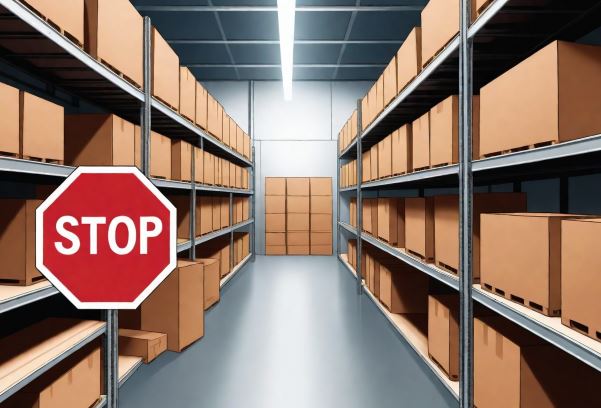











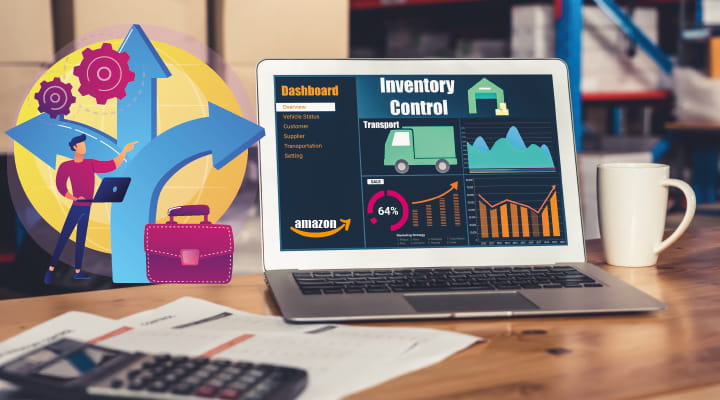






Denes, with 20 years experience in logistics, holds a Logistics Manager degree from Budapest’s Logistics Association and has penned a thesis on mobile devices. Venturing into e-commerce, Denes specializes in Fulfilled By Amazon and passionately educates others about Amazon selling techniques.